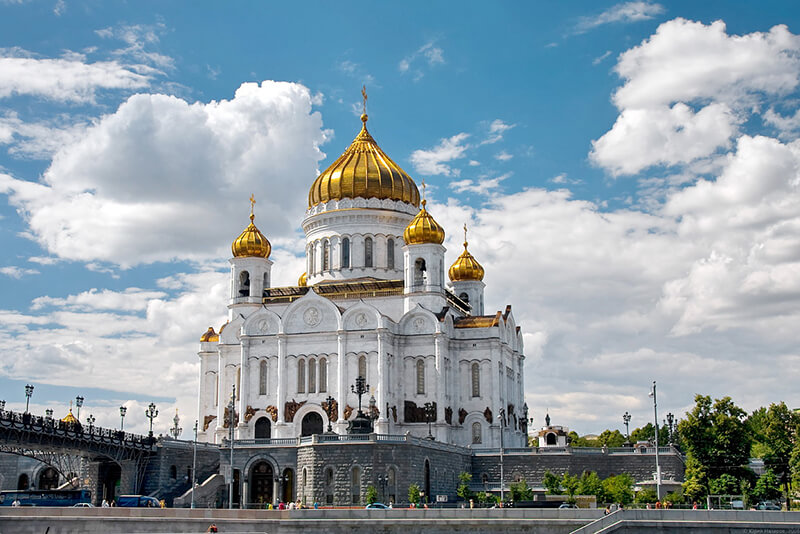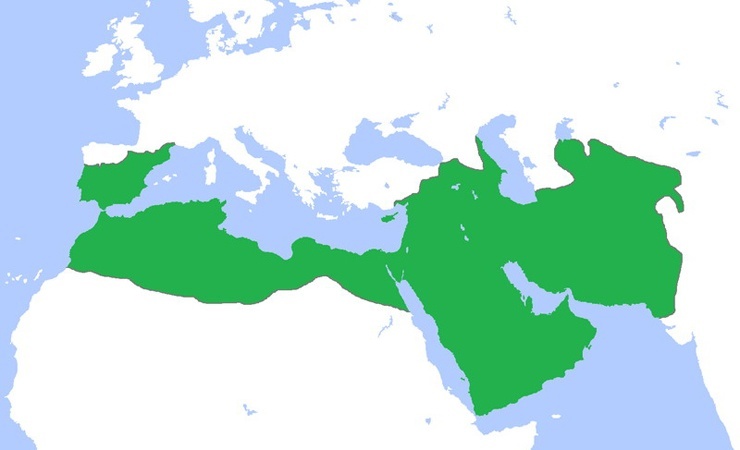The largest Orthodox churches in the world
There are three Orthodox cathedrals in the world that can equally claim the title of "the largest church in the world." One of them is the most spacious - this is Tsminda Sameba in Tbilisi. The other is the largest in size: it is the Cathedral of St. Sava in Serbian Belgrade. And finally, the highest cathedral is the Cathedral of Christ the Savior in Moscow.

Cathedral of Christ the Savior in Moscow. Its height of 103 meters is almost a 40-storey building. But the architect of the temple, Konstantin Ton, created such proportions that from the side the cathedral does not seem so high or large. Big? Yes. The largest or the more so the highest - no.
You begin to realize the scale when you find yourself inside. The size of the central altar is like a parish church. Vaults - breathtaking.

At the same time, unlike Catholic cathedrals, the dimensions of which are also amazing, in the Cathedral of Christ the Savior there is no feeling that you are a small person (they say this is a feature of the Latin style - to give a person the feeling that he is an ant compared to God). You are part of the whole building, this is your home. A feeling that is so close to an Orthodox church...
This cathedral had an unusual and difficult history - to start with the fact that initially it was supposed to be completely different (quite completely), and stand not on Volkhonka, but Sparrow Hills. But this .

The tallest Orthodox cathedrals in the world
So, the Cathedral of Christ the Savior is the highest Orthodox church in the world - 103 meters.
But the height of which other cathedrals exceeds 90 or 100 meters:
101.5 meters - St. Isaac's Cathedral in St. Petersburg. An example, just, of “Latin” architecture, when a temple is not only a temple, but also a majestic castle, which either “lifts” you into the heights, or “presses”, it’s not clear ...

97.5* - Tsminda Sameba, Tbilisi, Georgia. The asterisk is worth it, because a variety of data are given everywhere - up to 86 meters without a cross. This is connected both with the design feature of the Cathedral (part of it goes underground for 10 meters), and with the fact - to consider the cross as part of the building or not: and it is seven and a half meters ...

96.0 - Spaso-Preobrazhensky Cathedral in Khabarovsk. Built in 2004 year. Unlike the Cathedral of Christ the Savior, it has more elongated proportions and therefore it seems much higher.

93.7 - Smolny Cathedral, again Peter and again an example of the "Latin" style. As architecture - Rastrelli's unconditional masterpiece: an absolutely perfect composition. But once inside, you understand why it is so important to appreciate and honor traditions in temple building...

If we take Europe, then there will be the highest Orthodox church Cathedral of the Three Saints in Timisoara e, Romania - 83 meters. Here it is: (pay attention to the tradition in Orthodox architecture that is different from ours - it is completely familiar to Eastern Europe)

The largest temple
Tsminda Sameba in Tbilisi (Georgia), Trinity Cathedral, Holy Trinity Church - the largest Orthodox church in the world. Generally speaking, some consider it also the highest - 105 meters. But this is the height together with the 7.5-meter cross, and even then - at best, the data varies too much from source to source.
But one fact is indisputable - this is the only Orthodox cathedral that can accommodate 15 thousand people.

Like the Cathedral of Christ the Savior, the cathedral was built exclusively on donations: from ordinary Georgians to big businessmen. Construction was completed in 2004.
The temple was designed with echoes of the traditional Georgian temple style - like the Cathedral of Christ the Savior with elements of the old Russian style.
The cathedral stands on a hill on the banks of the Kura River, visible from everywhere.
Tsminda Sameba, as is often the case with large cathedrals, includes not only a central, amazing temple, but also nine chapels, which are located underground at a depth of more than 10 meters (perhaps, hence such large discrepancies in the height of the building, and someone else takes into account underground structures).
But what other churches, not counting the Trinity Cathedral, are among the "five" of the most spacious (all figures are estimated, that is, approximate):
- 14,000 people - St. Isaac's Cathedral (St. Petersburg)
- 12 000 - St. Michael's Cathedral (Cherkasy, Ukraine)
- 11,000 - St. Sava Cathedral (Belgrade, Serbia)
- 10,000 - this is several temples at once: the Cathedral of Christ the Savior (Moscow); the temple of the Volkmic Panteleimon (Athens, Greece); Spaso-Preobrazhensky Cathedral (Odessa, Ukraine); Church of the Holy Sepulcher (Jerusalem, Israel)
The largest Orthodox church

Well, if by the size of the temple we mean its width multiplied by the length, then the largest Orthodox church is the Serbian Cathedral in the name of St. Sava in Belgrade.
Its length is 91 meters, width - 81 meters (for comparison: Tsminda Sameba - 77 by 65 meters, the Cathedral of Christ the Savior - 60 by 60).
This is a "long-term construction" in the truest sense of the word. Construction began in 1935. Then the war happened, then the Soviet power. Work resumed only in 1986. As far as we know, finishing work is almost finished now.
The cathedral is very squat in proportion. With its huge size, it is 24 meters lower than the Cathedral of Christ the Savior - "only" 79 meters.

At the top of the four-ton central dome (they say it was raised for more than a month!) There is a huge, 12-meter gilded cross, and on other domes there are seventeen more crosses. And a few dozen more bells, the largest of which weighs 12 tons!
But these are all just numbers.
The greatness of any temple is not in meters - but in the assembly of Christians. At the funeral of Patriarch Pavel in 2009, more than a million people gathered around the cathedral.
Every great cathedral carries two destinies
- the first is the fate of the temple, in which the Sacraments are performed, and where thousands of people can gather in a single impulse to Christ.
- the second fate - or rather the "cross" - is the role of a symbol (city, or country), which is doomed to be a tourist destination. That is, a holy place reduced in the eyes of people to just a beautiful building, drowning in fuss, flashlights and conversations ...
The second is probably inevitable, but we must always remember how tourism differs from pilgrimage and not stand near the cathedrals as favorable tourists:
The tourist looks at the buildings "top-down";
and the pilgrim feels himself in the house of the Heavenly Father.
Read this and other posts in our group in




